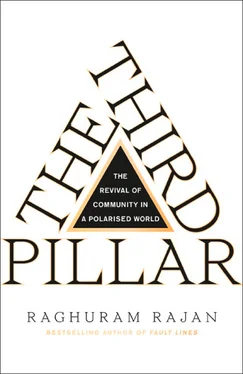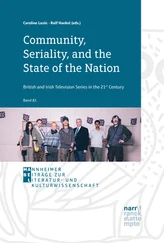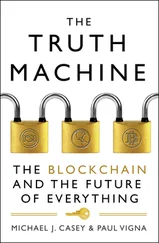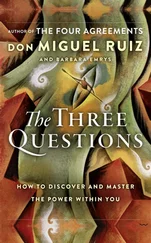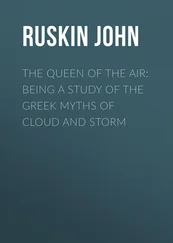Contrast transactions within a community with a typical market transaction. I just bought a bicycle tire tube. I searched for one of adequate quality at a reasonable price through an online platform, paid by credit card, and the tube was delivered within the time promised. Even though this transaction took little time, there is an elaborate explicit understanding or contract behind it. If the tube is not delivered or it proves defective, I have contractual remedies. The transaction is arm’s length and one-off. Neither the seller nor I know each other. Each one of us is satisfied we are better off from the transaction even if we never transact again. We do not look for further fulfilment through a continuing relationship.
The more explicit and one-off the transaction, the more unrelated and anonymous the parties to the transaction, and the larger the set of participants who can transact with one another, the more the transaction approaches the ideal of a market transaction. The more implicit the terms of the transaction, the more related the parties who transact, the smaller the group that can potentially transact, the less equal the exchange, the broader the range of transactions and the more repetitive transactions are over time between the same parties, the more the transactions approach a relationship. The thicker the web of relationships tying a group of individuals together, the more it is a community. In a sense, the community and the market are two ends of a continuum.
In his magisterial work, Gemeinschaft und Gesellschaft (‘Community and Society’), nineteenth-century German sociologist Ferdinand Tönnies argued that in a community tied together by strong relationships, individual interests are suppressed in favour of the collective interest whenever these interests diverge. By contrast, in a market transaction, ‘nobody wants to grant and produce anything for another individual, nor will he be inclined to give ungrudgingly to another individual, if it not be in exchange for a gift or labour equivalent that he considers at least equal to what he has given.’ 2In this sense, only individual interests matter, and they have to be met transaction by transaction.
In this chapter, we will examine what makes communities useful. 3Those hearkening to the past, as in many a fantasy novel, often invoke an idyllic view of the community. Typically, this is a village – an arcadia where simple honest people look out for one another, offering goods and services without demanding prompt or equal compensation. The village community can be warm and supportive. Yet, it can also be small, closed, and intrusive. We will see how a community facilitates economic and social transactions, but we’ll also recognise there are limits to community effectiveness, and indeed situations where a community may be harmful to its members’ interests. That will be why a community works best as part of the balance.
THE POSITIVE ROLES OF THE COMMUNITY
Evolutionary psychologists argue that we help others who are related to us or look like us because it is genetically hardwired into us – to the extent altruism toward kin is a genetic trait that helped its own survival in the Stone Age, when much of our evolution happened, it helped itself be passed on. 4Similarly, we may be genetically evolved to help others, provided they reciprocate the favour, and we are programmed to have a strong distaste for freeloaders who do not. Since evolution is slow, we are fully adapted to the challenges of the Stone Age, and we continue to retain such propensities, even if no longer critical for survival. In other words, we are predisposed to be social.
We have built on this predisposition. People have always banded together because a group is better at defense (or attack) than an individual. In modern society, healthy communities continue to police themselves and their surroundings to ensure safety for their members. They do more, though – much more.
They offer their members a sense of identity, a sense of place and belonging that will survive the trials and tribulations of modern life. They do this through stories, customs, rituals, relationships, and joint celebrations or mourning so that when faced with a choice between self-interest and community interest, or between community members and others, members are more inclined to put their own community first. Often, communities inculcate shared values and goals in members, as well as imbue in them a sense of personal utility from various actions that benefit the community.
The community also monitors economic transactions as well as noneconomic ‘favours’ within the community, and it sees that everyone delivers their promised part fairly, if not immediately then over time. It assists those falling behind, as members contribute to those in need. It also aggregates the capabilities of all its members and brings them to bear to enhance collective well-being. Let us examine all these roles in greater detail.
Survival: Training and Socialising the Young
A community needs to train its young to be productive, to take over from current adult members as they age. Equally important, the values of the young members have to be shaped to protect the well-being of the community. Most communities train their young through apprenticeships, where they are taught skills and learn to internalize the norms and values of the community.
Apprenticeship often ends with a rite of passage that signals the coming of age of a youth into adulthood. In a number of tribes such as the Aborigines in Australia or the Papuans of New Guinea, the rites were so physically brutal that those up for initiation occasionally died. 5Not only did the ordeal prevent those who did not have the requisite tolerance for pain, or desire for greater power and responsibility in the tribe, from achieving full manhood, but those who did survive it also would likely be even more committed to the tribe. Modern communities like fraternities at colleges, law firms, research universities, or the military have their own rites of passage, differing only in the degree of physical or mental pain from tribal initiation ceremonies.
The community plays a very important role in supporting education, even in modern schooling systems. As Chicago Nobel laureate economist James Heckman emphasises, a child’s attitudes toward learning, as well as her future health, are shaped in the critical preschool years where the family and community matter far more than the formal education system. Moreover, even after children enter the formal schooling system, the community determines whether they make use of it to the fullest extent. Whether children are given the time, encouragement, and the support to do homework depends on the environment at home and the attitude of their friends toward academic effort.
Linkages between the school and the community are also important. Parents will be more eager to monitor and support teaching if they feel they can influence how the school is run – many successful schools draw on parents for school boards, for staffing and supporting extracurricular programmes, as well as for providing funds for equipment that is not accounted for in the normal budget. Communities help the young outside schools, whether it is through preschool learning, summer jobs, or watching out for, and counseling, teenagers who might stray. Equally, teachers, coming from the community, can work to build alternative local social supports for students whose families are broken. Schools are also an important focal point for parents to build mutual friendships, as they are drawn together in a common endeavour.
The community shapes the views of its members about one another, so as to encourage mutual support. The elderly are a store of knowledge and have experiences and wisdom that can be very important in guiding the community. Nevertheless, in environments where reproductive capabilities matter enormously or much of the work is physically taxing, the elderly may be a dispensable burden. To give the elderly an incentive to share their wisdom, even while protecting their position, the socialisation process often inculcates respect for age. In modern South Indian Brahmin marriages and coming-of-age ceremonies, the elderly have an important position as they guide the young on the specific rituals to be followed. The young signal their acceptance of the natural order by repeatedly prostrating themselves before anyone older, asking for their blessings. Rank or position in the outside world is immaterial in determining who prostrates themselves before whom – all that matters is age. More generally, communities may allocate authority and power in ways that have nothing to do with economic capability, but help keep the community together.
Читать дальше
